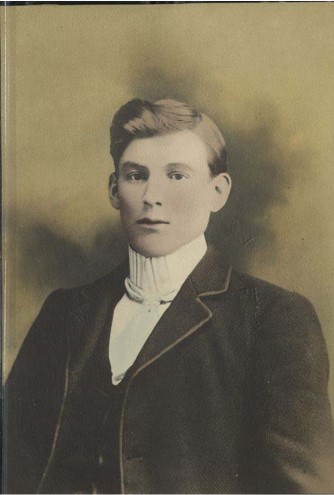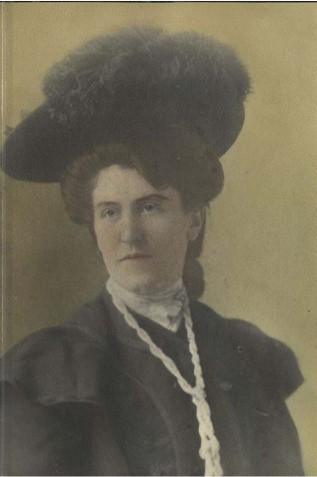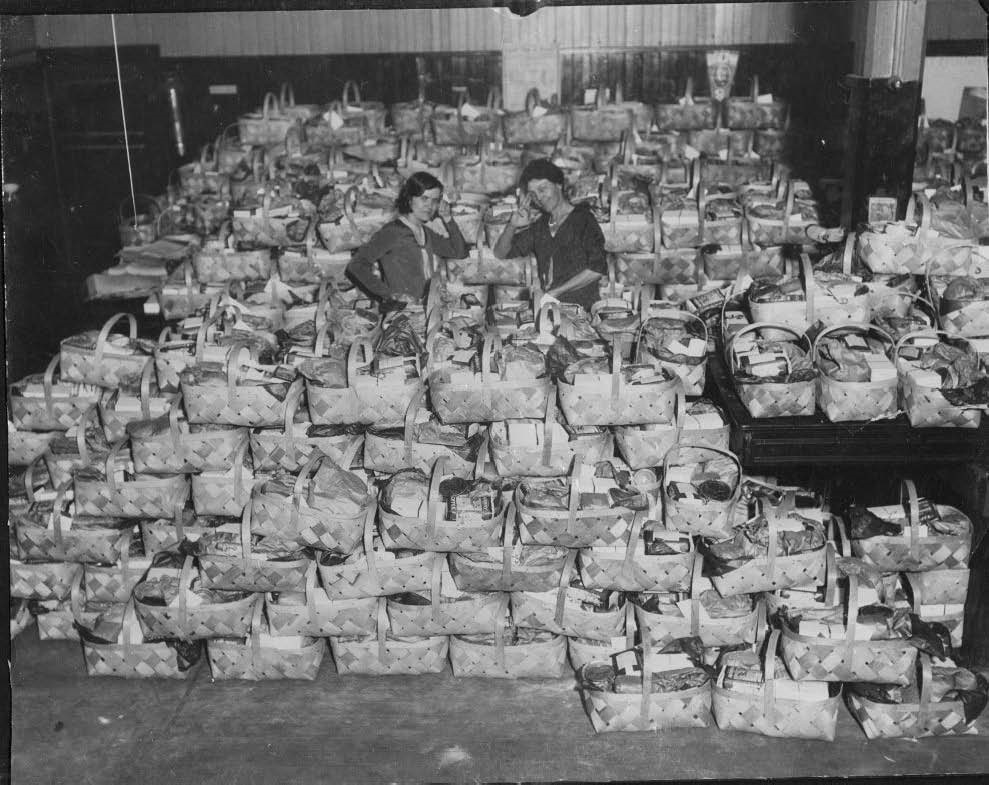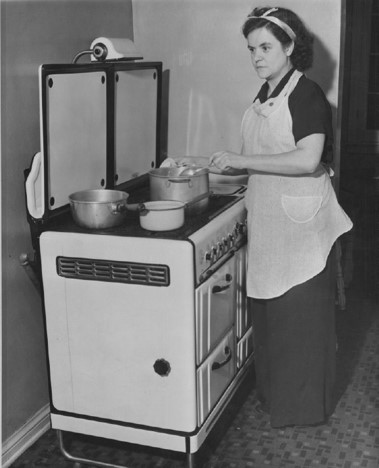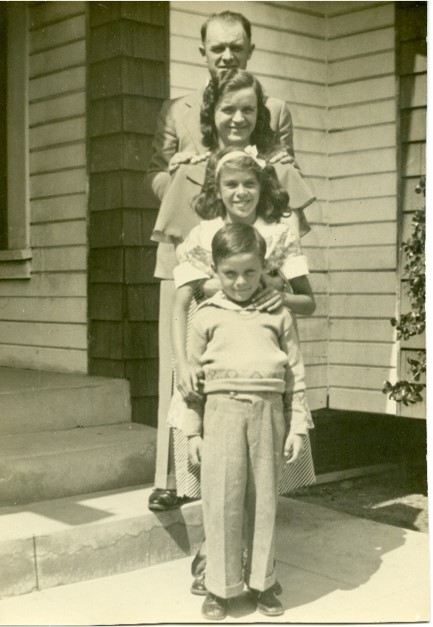On October 27, 1936, in a special edition celebrating the Herald’s twenty-fifth anniversary as an evening daily, city editor John B.T. Campbell wrote this about Aggie Underwood:
“Aggie Underwood should have been a man. A rip-snorting, go-gettum reporter who goes through fire lines trails killers . . . using anything from airplanes to mules to reach the spot that in newspapers is . . . marked with an arrow or an X. What a gal! Usually followed by one or two photographers who . . . get lost when unable to keep up with this speedy lady. Favorite occupation is following a good murder. Favorite story, a good murder. Favorite photograph, a good murder. Favorite fate for all editors, good murder. Help!”
Today we may struggle with the “should have been a man” comment, but at that time it was high praise. Aggie was still new at the Herald, starting in January 1935. She undeniably made an impression on the newsroom. She recalled those early days as “happy-go-lucky.” The reporters worked hard and played just as hard; often going in a group to Chinatown for dinner, or gathering at a bar in Pico Gulch (about half a block from the office, on Pico between Figueroa and Georgia streets).

In her work, Aggie made it a point never to ask for special treatment because she was a woman. One night, she arrived at a brush fire in Malibu. A Sheriff’s deputy stopped her. “It makes no difference if you are a reporter. No woman can go in there.” She was considering her next move when she heard a man’s voice. He addressed the deputy, “It’s all right, lad. She’s been to a hell of a lot more of these things than you ever have. Go on through, Aggie.”
The voice belonged to Sheriff’s Department Inspector Norris G. Stensland, one of my favorite LA law enforcement officers.
Aggie worked well with law enforcement. She took the time to write to an officer’s superior to express how helpful he was. In this way, she built long-standing relationships based on mutual respect. Reporters like Aggie have a lot in common with detectives. Each knows the value of maintaining their composure and assessing a scene. Both cops and reporters know the value of developing informants.
One time, on a tip, Aggie arrived at the scene of a love-triangle murder. The cop at the door refused entry to Aggie, not because she was a reporter, but because she was a woman. “You can’t go in there, lady. It’s pretty bad in there. It’s no place for a woman. It’s a mess of blood all over.” Paul Dorsey, a Herald photographer who was with her, said to the officer, “Don’t worry about her. She can take it. Worry about me. Chances are that I can’t.”
In August 1935, Aggie got a tip that LAPD detectives planned to search the home of a woman accused of shooting and gravely wounding her husband at a dinner party days earlier. Aggie arrived before detectives Aldo Corsini and Thad Brown, who sought the pistol used by the woman. Aggie said the detectives were concerned about entering the home because of a huge gaunt German Shepherd. Nobody had fed or given water to the poor thing since the arrest of his mistress. The dog, frightened and stressed, barked from behind a window.

Aggie had an epiphany. “Look, Thad, Corsini and I will go to the back door and make one hell of a noise and distract the dog. While we’re doing that, Thad, you go in through the window, right there beside the front door, then unlock the front door and rush out. I’ll go in then and tame your dog; I’m not afraid of him.”
Aggie heard dogs are aggressive when they are afraid of taller, bigger humans who seem threatening. She figured the best way to approach the frightened animal would be to get down to his level. Corsini wasn’t about to get on his knees to confront the dog, and neither was Brown, but Aggie refused to retreat. Facing the dog, Aggie talked to him in a soft voice, and cautiously moved her hand toward his head. She petted his head gently and said, “What’s the matter, fellow? You hungry and thirsty?” The big dog whimpered. Aggie stood up and went to the kitchen sink to fill his bowl with water. She set out some food for him, too. He became her shadow. He followed Aggie around the house while the detectives searched for the gun, which they found in a laundry bag. The woman later went to prison for attempted murder.
Thad Brown promoted to captain of homicide/chief of detectives. The rank and file would have made him chief of police if politics hadn’t put William Parker in the office instead. Aggie said for years Brown blushed when asked if he had tamed any wild dogs lately.
Aggie’s cordial relations with police provided her with exclusive stories. She rolled up to a house in Eagle Rock one afternoon after getting a report of a double mystery death. Several LAPD homicide detectives stood around outside, waiting for the living room to air out. Aggie said after ten days, the corpses were ripe. The couple died in the middle of a sex act on the living room couch. Detectives weren’t sure whether they had a murder-suicide or an accident. Aggie wanted to catch the Herald’s next deadline, so she made a deal with Captain H. H. Bert Wallis. They identified the dead man, but they still didn’t know the woman’s identity. No detective wanted to enter the house until the smell dissipated. Aggie said she would brave the stench and retrieve the woman’s handbag, which sat on a table visible from outside.
The woman was nude except for a slip rolled up to her chest. The man, in his union-suit, had fallen to the floor. His penis had burst, and Aggie had to step over him to reach the handbag. She tried to hold her breath, but the smell of decaying flesh was pervasive, clinging to her favorite brown wool dress. Aggie grabbed the purse and handed it to Wallis. In gratitude, he gave her a head start on the story. It turned out the man met the woman in a bar, brought her home, and they died of carbon monoxide poisoning because of a faulty heater.
Aggie loved the brown wool dress. She saw it in a shop window and bought it on lay-away. In a conversation with Aggie’s daughter, years later, I learned the fate of the dress. Mary Evelyn told me Aggie came home that night, peeled off the dress and burned it in the fireplace, saying, “I’ll never the smell of death out of it.”

During her career, Aggie reported on hundreds of crimes. The most infamous of them began on the morning of January 15, 1947.
Aggie claimed to be the first reporter at the body dump site on Norton near 39th in Leimert Park. She was likely one of the first. It scarcely matters now. The deceased was a young woman, naked and obscenely posed. Her head is north, her legs spread and point south. A couple of days later, they identified the woman as twenty-two-year-old Elizabeth Short from Medford, Massachusetts. She became known as the Black Dahla.
Aggie interviewed the initial suspect in the grisly murder, Robert “Red” Manley. She sized him up and concluded he was not the killer. Despite an intense investigation, the case remains unsolved.
This post concludes my month-long tribute to Aggie, who inspired me to create this blog eleven years ago.

As we bid adieu to 2023, and prepare for new challenges in 2024, I thank you so much for your continued readership. This blog is one of my passions. I love relating true tales from L.A.’s past. Crime is banal, but the people who commit crime are endlessly fascinating. I’ve begun exploring stories for the upcoming year—there are some excellent ones. Within the next several days, I will begin my annual coverage of the Black Dahlia case, so stay tuned.
Happy New Year!

